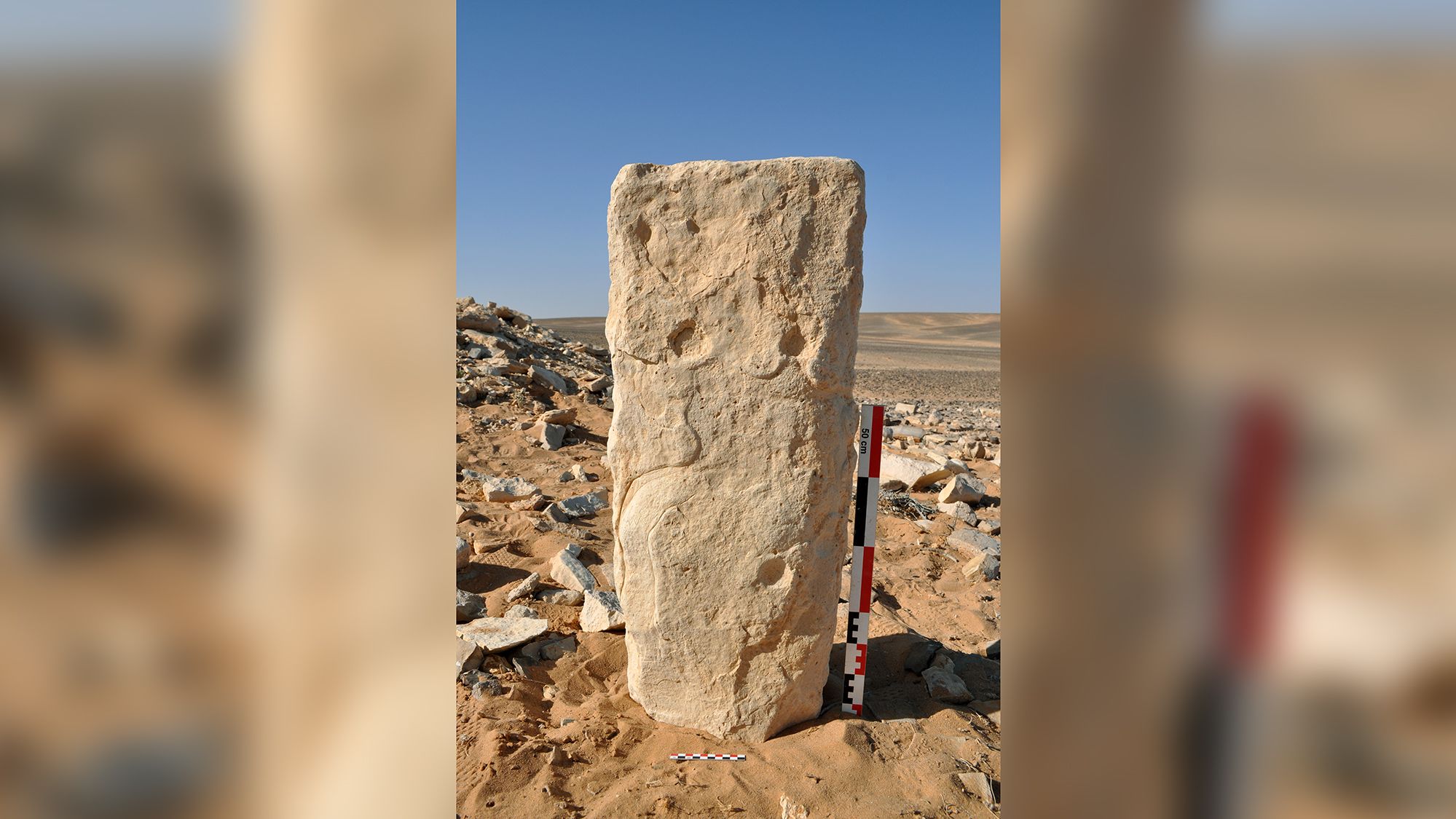Ancient Architectural Marvels Revealed: Unearthing the World’s Oldest Scale Building Plans

In a groundbreaking archaeological discovery, researchers have unearthed two exquisitely engraved stones in the Middle East, shedding light on the ingenuity and precision of ancient craftsmanship. These remarkable findings represent the oldest known scale building plans ever discovered, transporting us back thousands of years to an era of remarkable architectural prowess.
One of these awe-inspiring engravings was found on a rectangular stone fragment excavated at a Jordanian campsite, estimated to be an astounding 9,000 years old. The other two engravings, dating back approximately 8,000 years, adorned a boulder nestled at the base of a cliff in Saudi Arabia. These intricate carvings depict the majestic desert kites, massive structures employed to capture and corral herds of animals.
Publishing their groundbreaking findings in PLOS ONE, a team of esteemed scientists, led by the distinguished archaeologist Rémy Crassard, reveals the astonishing accuracy and attention to detail of these ancient stone engravings. These remarkable depictions closely mirror the shape, layout, and proportions of the actual desert kites found in close proximity. This suggests that these rock engravings were not only works of art but also served as invaluable maps, guiding hunters in their strategic pursuit of driving animal herds into specific desert kite locations.
The implications of these engravings go beyond mere maps. They likely acted as precise blueprints, offering a visual guide for constructing these colossal hunting structures. Furthermore, they may have been impressive demonstrations of the ancient artisans’ ability to meticulously transfer intricate 3D designs onto small, flat surfaces—a testament to their unparalleled craftsmanship.
As the Middle East witnessed the emergence of farming and animal domestication, hunting groups in the region continued to hold these monumental hunting structures, the desert kites, in high regard. Rémy Crassard, an eminent archaeologist from the French National Center for Scientific Research in Lyon, emphasizes the significance of these discoveries, shedding light on the enduring fascination and reverence for these awe-inspiring structures throughout the ages.
While similar ancient maps and structural plans, created as scaled-down drawings, have been found in Mesopotamia dating back approximately 4,300 years, the precision and accuracy observed in the newly discovered desert kite engravings are unparalleled in their sophistication and intricacy.
The revelation of these ancient architectural marvels not only provides a captivating glimpse into the intelligence and creativity of our ancestors but also offers invaluable insights into hunting practices and human-animal interactions of the distant past. These extraordinary discoveries push the boundaries of our understanding of early civilizations and their remarkable achievements, captivating the imagination of historians and archaeology enthusiasts alike.
As we continue to delve into the depths of history, these remarkable findings serve as a stark reminder of the awe-inspiring capabilities of our ancient ancestors. They inspire us to further explore the wonders of our shared past and celebrate the remarkable achievements that have shaped the world we inhabit today.



